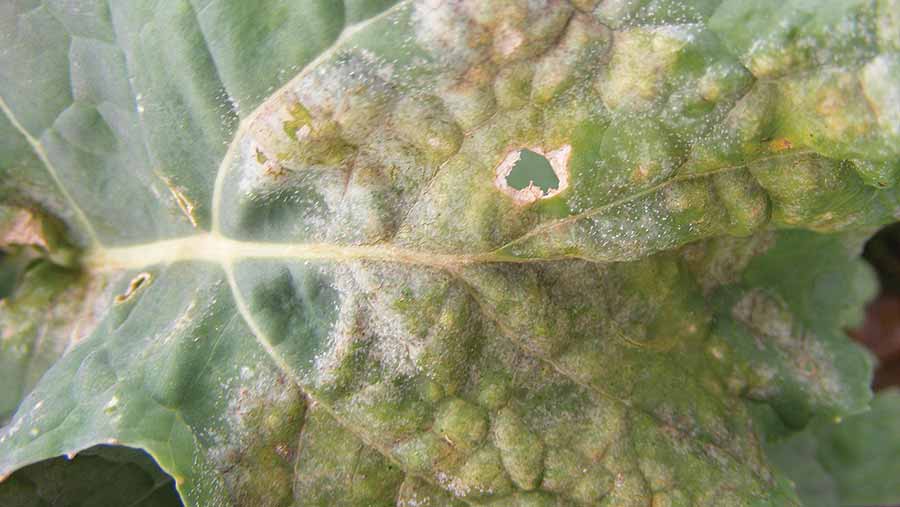Oilseed rape growers put on light leaf spot disease alert

Oilseed rape growers need to get out into their field this month to check for the crop’s most damage disease, light leaf spot, as experts warn of a high risk of infection.
A wet winter has given ideal conditions for the disease’s spread and scattered infection is being reported across the country as autumn fungicides start to run out of steam.
Infection usually starts in crops at low levels during the autumn, but wet weather is likely to have spread the disease by rain splashes through the winter and experts believe the disease costs growers £140m a year in lost yield.
“Growers need to monitor their crops and if the disease is found they need to plan to treat crops when they are able to get on the land,” Faye Ritchie, plant pathologist at crop consultants Adas, tells Farmers Weekly.
See also: How to assess and regulate oilseed rape growth this spring
She is seeing reports of commercial crops showing signs of the disease, while Adas’s untreated fungicide trial plots in Yorkshire are showing 100% infection.
Fungicide protection only last around six to eight weeks so crops sprayed last November may need treating soon especially in such mild weather conditions, Dr Ritchie adds.
High risk
Disease forecaster Neal Evans, European research lead at Weather Innovations, who works with Rothamsted Research on forecasts, warns crops are at a high risk after the wet winter.
“The risk is there and it is well worth growers taking a very close look as the disease can be hard to spot in the field,” he says.
The fungus which causes light leaf spot is able to survive the summer month on debris from previous oilseed rape crops and then be ready to infect newly emerging crops in the autumn.
Dr Evans warned of a high risk of the disease back in October due to the wet and cool summer, and will officially update his forecast in early March using actual winter rainfall figures.
Spotting the disease is often tricky as symptoms are not always visible, so he suggests taking 20 or so plants and incubating them in a plastic bag for a few days to see if the disease’s typical salt crystal-type lesions appear on the leaves.
If lesion are seen on the incubated sample plants, then recommended fungicide treatments to control the disease include azole products such as prothioconazole, tebuconazole and difenoconazole.
David Leaper, seed technical manager at agronomy group Agrii, reports there is not a lot of signs of disease on farms at the moment but there is a high risk of infection with lots of inoculum around in crops.
Better resistance
Growers have been switching to better disease resistant varieties with many chosing a minimum resistance score of 6 in a 1-9 scale where 1 is very poor and 9 is good resistance.
Many varieties such as Incentive, Arazzo, Picto and Harnas have scores of 6 in the AHDB’s Recommended List for the East/West region, while two newer ones Elgar and Alizze have scores of 7s.
He suggests that before spraying, growers should consider how resistant their varieties are to the disease, what growth regulation effect they can get from individual fungicides and what treatments were made in the autumn.
“Most growers will want to get out on the land with a fungicide in the next few weeks,” he says.
Hertfordshire grower and former chairman of NFU’s combinable crops board Andrew Watts says he is seeing some phoma and light leaf spot in his forward oilseed rape crops
He is aiming to use a fungicide treatment at the end of February or into early March as soon as growth of the crop starts again after the winter.
Growers can update themselves on the latest disease forecasts on the Rothamsted site’s light leaf spot forecast page, while the forecasters use @LeafSpot to tweet updates to followers.

